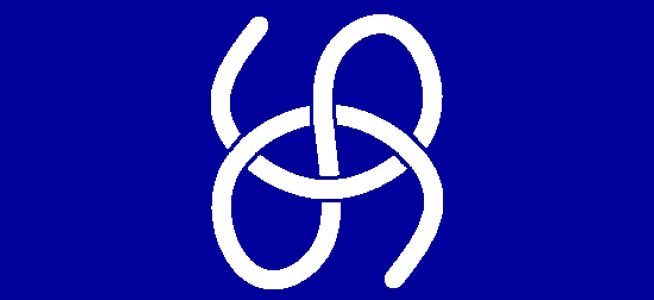Alice and Bob, initially a distance l apart, walk towards each other, each at a speed w. A bumble bee flies from the nose of one to the nose of the other and back again, repeating this zig-zag flight at speed f until Alice and Bob meet. How far does the bumble bee fly?

There are several ways to solve this problem. The naive approach is to calculate each segment of the bee’s journey and add up an infinite series of terms to get the total. A much simpler approach is to focus on time rather than space.
Spacelike Solution (naive approach)
We compute the distance travelled by the bee during the first segment of the flight from Alice to Bob. This is illustrated by the trapezium in the Figure below.

The bee travels a distance d while Bob goes a distance b, so the total length is l = d + b and the ratio of the distances k = d / b is equal to the ratio of the speeds k = f / w. The length of the bottom edge of the trapezium in the figure is d – b, so the ratio of bottom side to top side is
r = ( d – b ) / ( d + b ) = ( k – 1 ) / ( k + 1 ) .
This gives the relative size of the next segment of the bee’s flight: each segment is scaled by a factor r. Consequently, the total distance travelled by the bee is
D = d ( 1 + r + r2 + r3 + … ) .
Now noting that d = k l / ( k + 1 ) and summing the geometric series, we have
D = k l / ( ( k + 1 )*( 1 – r ) ) .
Using the relationship between k and r, this can be written
D = k l / 2.
This is the required distance.
Let us take specific values l = 2 km, w = 1 kph and f = 10 kph. So k = 10 and r = 9/11. This gives
D = 10 * 2 / 2 = 10 km.
Timelike Solution (smart approach)
Alice and Bob must each travel a distance l / 2 at speed w before they meet. Thus, the total travel time is t = l / 2w . The bee, travelling at speed f, which is k times faster, travels a distance (speed * time) which is D = f l / 2w, or
D = k l / 2.
This is the answer obtained above, but derived with much less effort.
Simpler Still
Alice and Bob both travel a distance l / 2. The bee goes k times farther, therefore
D = k l /2.
Conclusion

A story is told that the flight-of-the-bumble-bee problem was posed to John von Neumann, the renowned Hungarian-born mathematician. Von Neumann thought briefly and announced the correct answer. His inquisitor remarked: “Oh, I see you’ve spotted the quick way to do it”. “What quick way?” responded von Neumann. He had summed the infinite series in his head; not many of us can do that.
